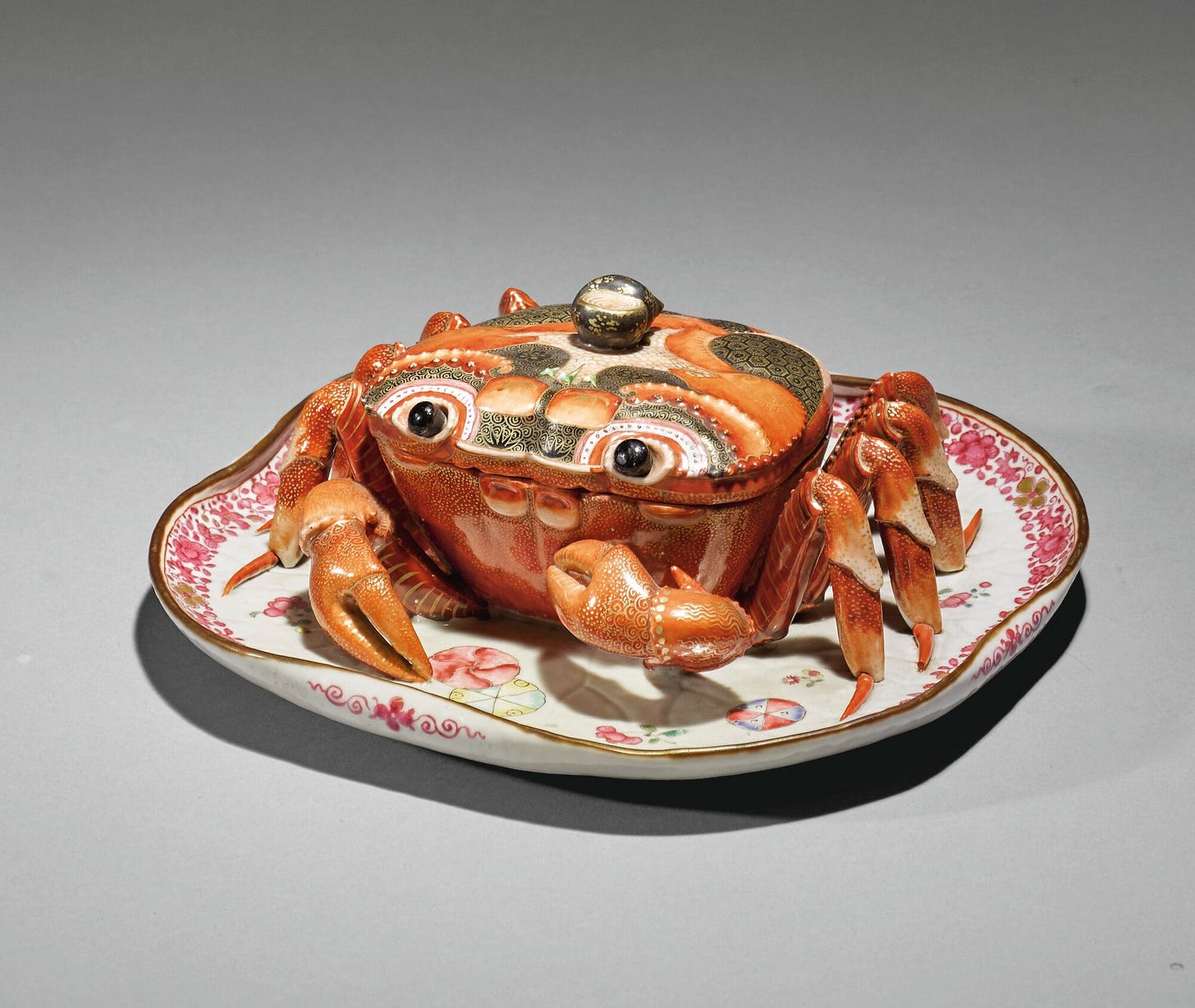do nothing, be not afraid & visit your own tomb

Let’s begin with How To Do Nothing. My friend Alex sent me this article (which is now a book) when I asked them frantically for book recommendations (I am always seeking those, please send them and also friend me on Goodreads). It was a piece that blew my hair back a bit—it’s not about lazing about, but consciously thinking about what we as a society think about what is “productive” (especially vis-a-vis a capitalist bottom line), and thinking about whether or not those are structures we agree with, or what it’s like to push back against what Odell calls the “attention economy.”
Anyway, after Chapter 1, I was about ready to join a convent or a commune, and then I read Chapter 2, which is great because it’s explicitly about why just escaping from society doesn’t work—we have to take time to be contemplative, but return back to participate and make things better.
So at the very least, I headed to the Huntington Museum & Gardens, which is a combination arboretum / museum about 20 minutes from me, and just sat on assorted benches and took pictures of plants and read the book. And it was lovely. I heartily recommend it.
Relatedly, I’ve been looking for a time to share this piece in the Paris Review on the birth of the semicolon, and what better time than when we talk about that pause, that cæsura that Odell asks that we take. (Also I am delighted to see a mark I hadn’t seen before—you can see on the last line, that looks like a semicolon but is an abbreviation for the word que)

In other language, I recently found out about kenning, an Old Norse / Old English way of using figurative language in poetry to refer to something more mundane, so you get something like hauka fjöllum = hawk’s mountain = arm (because it’s where a hawk is perched during falconry).
This website has a ton of great examples and breakdowns, such as:
Heita dýrbliks dynsæðinga hungrdeyfi
hunger-soother of the din-gulls of the beast-gleam of Heiti = warrior
the beast of the Heiti → SHIP
the gleam of the SHIP → SHIELD
the din of the SHIELD → BATTLE
the gulls of the BATTLE → RAVENS / EAGLES
the hunger-soother of RAVENS/EAGLES → WARRIOR

These little “floating worlds” in test tubes are so beautiful!
Obviously I was Online As A Teen, so I feel this acutely, but this piece about our nostalgia for the early web and how it’s influenced culture in ways like the rise of vaporwave, and creations like GeoCities-izer, a site that turned any website into looking as if it were created from GeoCities in the mid 90s, is great:
The complicated pang of nostalgia that you feel while scrolling through the GeoCities-izer isn’t necessarily for the objects themselves — it’s for the context in which they were made, for the promises of an inclusive and utopic web that they were enmeshed in, yet have since failed to materialise.
There is a floating (!) parade (!!!) celebrating Hieronymus Bosch and I want to go:

They have restored the Ghent Altarpiece, and the Lamb of God is terrifying. A good friend put it thusly:
No one says “Be not afraid” if there is nothing terrifying happening. https://t.co/Jh5i8ykLrW
— Josh Easterson (@JoshEasterson) January 21, 2020
maybe sacrilegious news: This interview with Jude Law ostensibly about the new season of The New Pope has one of the ledes of the century: “Jude Law is looking at art. I am looking at Jude Law.” It’s also a great piece about Jude Law thinking about life in his 40s, his work in The Young Pope, what beauty means—especially as one ages, especially beauty like Law’s which is beatific (honestly in the theological meaning!), but also, as the author writes, with a “glimmer of danger, like a cool blade held against your throat.”
…and finally, if we could all be so lucky (to have a tomb of our own, to visit it with Nicholas Cage, or to be referred to as a Mystery Woman)

Related, one of my favorite Clickhole articles: 7 Things You Have To Do When Attending Your Own Funeral In Disguise.
I love this crab bowl from mid 18th c. China, there are only four of them in the world!

etcetera: Russian Birds Accidentally Preserved Historic Documents in Their Nests. There is a fighting game based on Les Misérables (and I have just found out that not only is ROBOJEAN a character but the final boss is JUDGEMENT). Japan has invented sliced mayonnaise.
